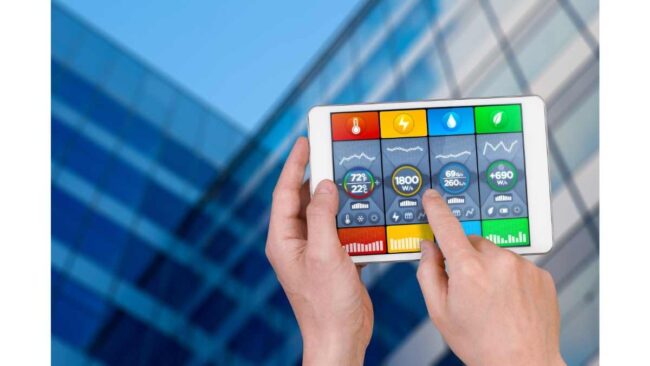Automating an already built building is possible and desirable. However, today the integration of home automation from the construction project is increasingly in demand. Thus, we can speak of different degrees of building automation systems or intelligence.
On the other hand, cities demand the application of sustainable construction standards. Automation features help not only to meet these requirements but also to build safer, more efficient and comfortable buildings.
How To Incorporate Building Automation Systems In The Architectural Project?
Currently, buildings are classified according to their degree of automation. When home automation is integrated into the project from the early stages, we speak of grade 3 smart buildings. In these constructions, automation systems are fully integrated. In reality, this type of design requires the work of a true team. It is made up of architects, engineers, consultants, suppliers and users.

The project must contemplate three automation systems:
- Basic control system. Monitoring of facilities and energy supply.
- Security system. Dedicated to the protection of people, material goods and information. It includes smoke and fire detection systems, water supply, monitoring of firefighting equipment and signage. Also surveillance circuits, access control, emergency care and motion detectors.
- Energy saving system. Air conditioning, heat exchange, lighting control, use of solar energy.
It is interesting to note that these features are included in the new construction standards for sustainable buildings. This regulation establishes at least seven fundamental requirements that all works must comply with.
For example, there are storm water runoff management systems, reduction in the use of drinking water, ventilation and passive design parameters. Here you see several of the features of automation.
Characteristics of Architectural Building Automation Systems
The building automation systems, thought from the design itself, allows installing all the necessary measurement and control systems. Also determine in advance the location of devices and circuits. This perspective helps to adopt a design where systems are integrated both functionally and aesthetically.
In this way, it is possible to merge all the devices and data they provide as well as the space in which they will be installed. This will allow multiple variables to be controlled in the future.
The basis of building automation systems that all measurement and control elements are interconnected. Thus, the different systems can share devices, supervision and maintenance, reducing costs and achieving greater efficiency. The great contribution of home automation to architecture is the flexibility of design. This is verified especially in specific aspects such as lighting, ventilation and air conditioning.
In traditional construction, these parameters are subject to factors that are often difficult to control and that require expensive investments. On the other hand, building automation systems allow them to be handled and controlled in a simple way. On the other hand, the combination of automation with passive design gives rise to innovative solutions and previously unimagined comfort.
Benefits of Building Automation Systems
Home automation represents an enormous contribution to sustainability. Today this principle occupies the first place on the construction agenda. It’s because buildings consume around 40% of global energy and contribute almost the same percentage of global warming.
- Automation brings incentives. In accordance with the new sustainable construction standards, certifications and incentives are provided for buildings that meet sustainability criteria.
- Energy efficiency. Substantial savings and more efficient use are achieved through programming and control. Especially in lighting and air conditioning, responsible for 90% of energy consumption.
- Improves interior comfort. The regulation and control of temperature and lighting allow maximum use of natural light. Also the care of green spaces through automatic irrigation. Automated facades help save on heating and cooling.
- Improves the reliability and functionality of the building. The intelligent system is based on multiple distributed controls, which means that if one fails, the others will continue to work.
- Increases security and accessibility. The installation of intelligent security systems combined with the others provides more peace of mind when the building is empty. They also take into account the needs of all current and future users through emergency messages, surveillance and alarm activation.

COMMENTS